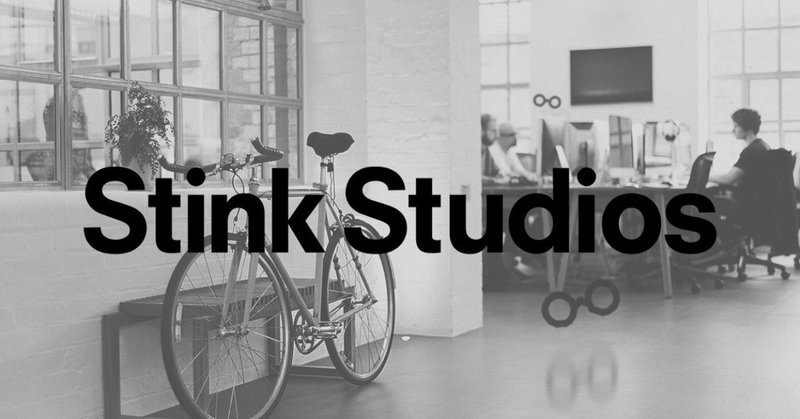
“Most important thing is to provide environment that team can stay healthy both physically and mentally, as well as being able to regularly learn new skills” — by Stink Studios<vol.9>
For this, our ninth edition, an interview with “Stink Studios (formerly known as Stinkdigital)”, which undertook a number of the major brand project and recently, they produced the familiar, for Japanese readers, UNIQLO’s one of product’s promotional movie “Skip Winter”, was pursued. Starting in London, they steadily expanded their operations to various parts of the world. We explored their ways of working as a company.
Question 1:
Please tell us about your company.
Stink Studios was established in London 8 years ago and we have branches in New York, Paris, Berlin, Los Angeles, Shanghai, and Sao Paulo. Around 120 people are working across the whole company and we work with clients including Burberry, Netflix, Google, Chanel, and Adidas. Stink Studios is part of creative network Stink alongside of production company Stink Films.
Question 2:
On average, how many projects each person handle at one time and how much time does the team spend on one project?
Usually one person handles 2 to 5 at one time. About time that team spend for each project, it’s depends on how big the project is, but usually takes 3 to 6 months.
Question 3:
On what basis does your company/team decide to take the project?
We try to make sure it’s the right project for us AND the client. We’re very honest, if we don’t think it’s the right brief for us we always suggest alternative partners… other friends in the industry. We like solving problems, and taking on things we haven’t done before.

Question 4:
Please tell us about the characteristics of your clients.
Mostly technology and fashion clients, but we love to work with any modern brands.
Question 5:
When your a team start a new project, what work process does your member follow?
We have a team of Executive Producers who oversee each office. New projects will typically come to them, and they’ll work with the Creative Director and Technical Director to see if it’s a good opportunity for us. From there, a Producer will get involved and start to build a team to deliver the project.
Question 6:
Who has the decision making power on your projects?
Executive Producers have the final decision on projects, but we try to make sure everyone in the team has a voice and an opinion. Ultimately someone has to make the decision though…. committees don’t work in our experience.
Question 7:
When your team take a job, to be completely honest, there are probably jobs your team actually want to do and jobs that your team simply do for the money. How does your team strike a balance between the two?
We try to make sure there’s something interesting about any project we take on. It’s usually lead by the idea, but sometimes it might be a chance to work with a new technology, a brand that we like, sometimes it’s enough that we work with nice people who are respectful of the team. It’s honestly very rare that we take on a project for financial reasons alone… but (of course) we always have to be considerate of financial growth and stability in the company.

Victoria & Albert Museum / Old Marble New
Question 8:
With what kind of strategy do you use in making contracts with your clients?
It differs by client, and different markets. Sometimes we get paid 50% up front and 50% on completion (the old film production model), other times we invoice against a schedule based on milestone deliverables.
Question 9:
In what ways does your company provide a good working environment for employees?
We try to create conditions where people can do their best work. Lots of freedom, but everyone works are very hard. Everyone finishes at 3pm on Fridays whenever possible, and we give every employee $1000 per year to spend on training and development.
Question 10:
Please tell us about the tools used in your office.
We rely on Google Docs for collaboration, and Slack for communication. Most of the usual creative tools like Photoshop and Sketch, we mostly use After Effects and C4D for visual effects. Mostly Python and some Node.js on the backend, and ES2017, React & Redux on the frontend.

Question 11:
Does company allow employees to work from home?
Employees sometimes work from home, but we generally prefer people to be together in the same room — the work always seems to be better that way.
Question 12:
Where does your staff receive stimuli?
We share lots of inspiration on Slack, mostly from the internet but we try to be connected to cinema, print, the arts, music…. inspiration comes from everywhere really. We don’t allocate time to study, but each employee receives a $1000 fund each year for their professional development — attending conferences, buying plug-ins, taking courses, whatever.
Question 13:
What is the most important thing in a workplace/studio for your company/team?
Being able to regularly learn new skills, and having a sense of shared concern for each others wellbeing.
Question 14:
Finally, what as a company do you believe is the most important requirement for doing “Good Work?”
We try to have a simple question: is it beautiful, entertaining, or useful. If the honest answer is “no” then it’s probably not “Good Work”.

Ray-Ban Holiday Campaign
Stink Studio’s SNS account
Twitter / Facebook / instagram
Click here for previous articles
Follow us!

この記事が気に入ったらサポートをしてみませんか?
